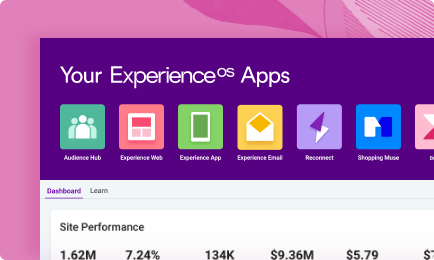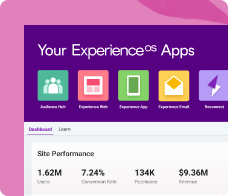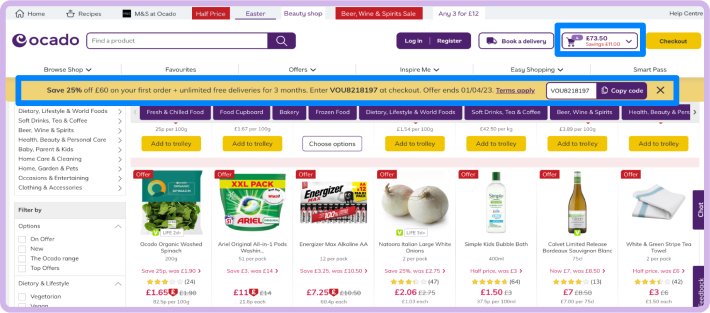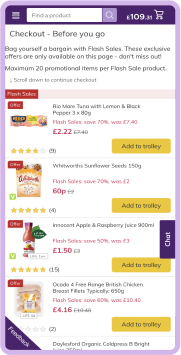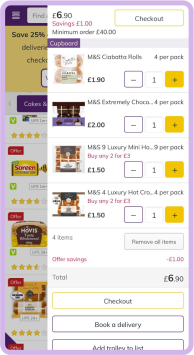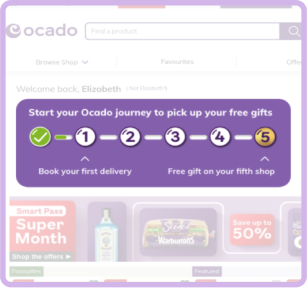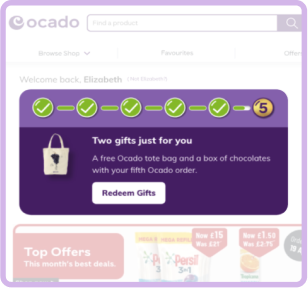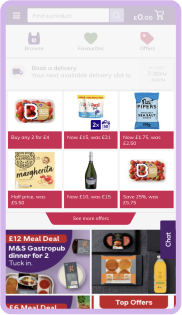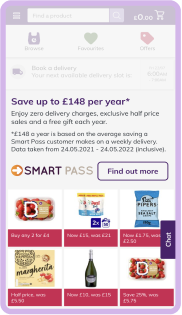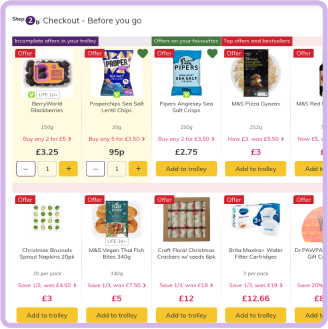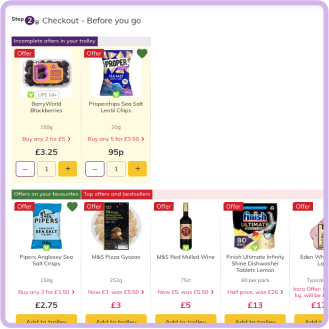Ocado knows that a customer’s first shopping experience is likely the longest and most challenging. But rather than try to simplify the experience too early—after all, at this stage, it is impossible to know what types of products a customer truly prefers—Ocado’s goal is to demonstrate the impressive breadth of products they offer. Ocado has a product catalog totaling over 50,000 ever-changing items, and they have realized that this is critical information for first-time shoppers.
Therefore, the total product listing page for shoppers needs to be updated, allowing new customers to freely browse all available products and build a cart before they are asked to create a mandatory account.
For first-time visitors, the Ocado product listing page looks like the above, showcasing a wide range of products and promoting an exclusive first-time discount banner at the top of the page. Personalized messaging in the cart shows the visitor the amount of money saved based on the current cart total.
Notice that this experience is mostly unguided, allowing first-time shoppers to fully explore the product catalog. This experience yielded a +5.7% uplift in the add to cart rate.
